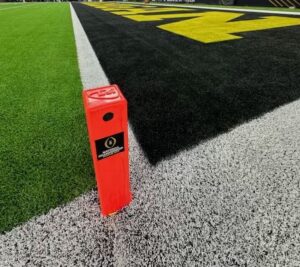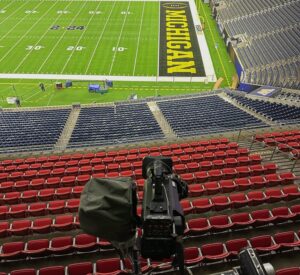CFP National Championship 2024: ESPN Debuts New PylonCams, Establishes Almost Fully IP Compound
100+ cameras — including 15 SSMOs and a pair of 4K SkyCams — are covering NRG Stadium
Story Highlights
Tonight’s a milestone night in the history of college football. Not only does Monday’s clash between Michigan and Washington at Houston’s NRG Stadium mark the tenth championship game in the history of the College Football Playoff — the final one under a four-team format — in many ways; it’s a watershed moment for a sport on the verge of widespread realignment and postseason expansion.
Generational changes are occurring in how a championship of this magnitude is broadcast. For the first time at this event, ESPN has established a nearly completely IP-based production compound, while debuting a few new innovative cameras: a beefed-up PylonCam, two 4K-capable cameras on both SkyCams, a box camera on each goalpost for a 190-degree look at the back of the end zone.
It’s all in the name of one goal: to provide the most comprehensive coverage of the action on the field for the viewer at home.
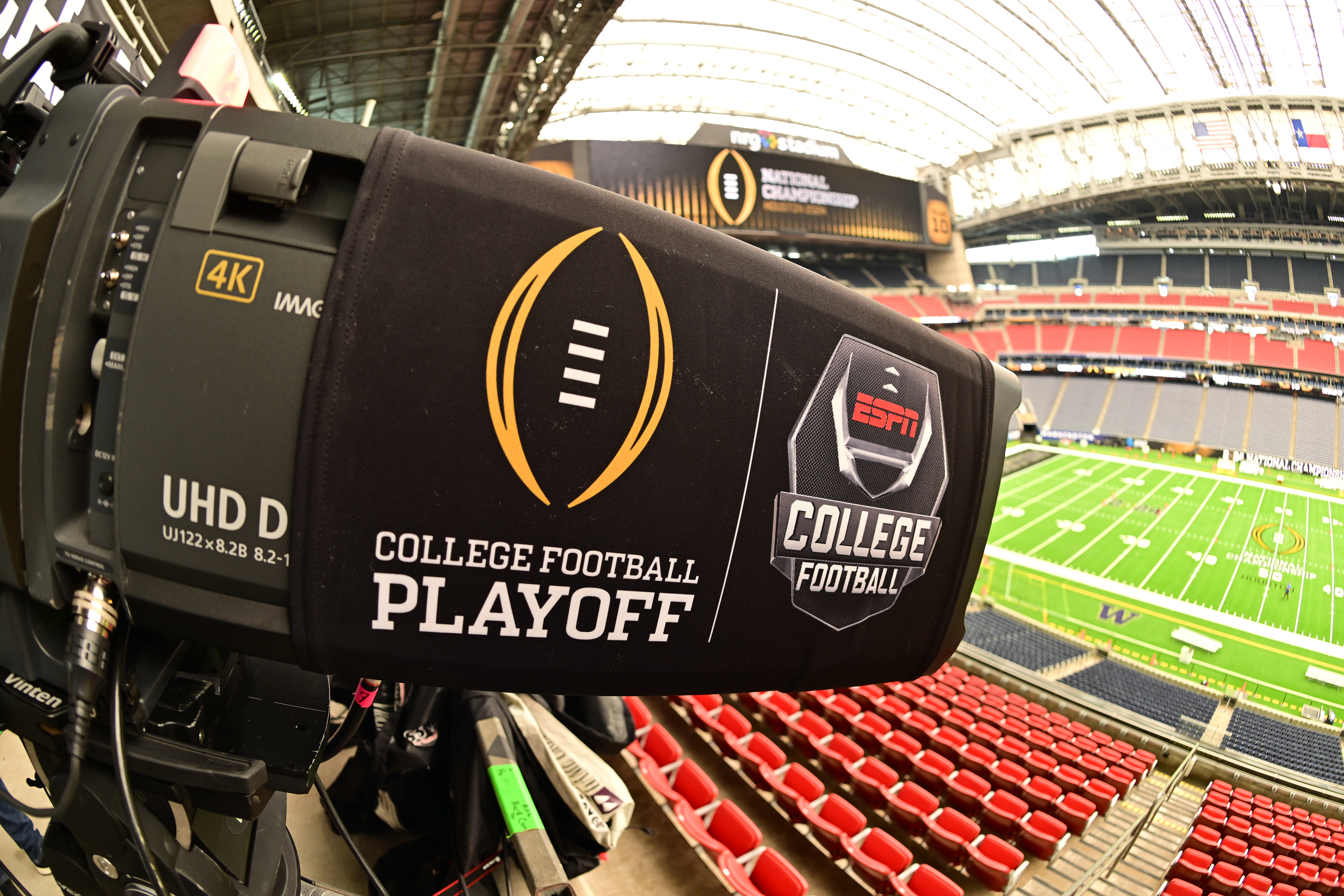
ESPN has deployed more than 100 cameras in and around Houston’s NRG Stadium for Monday night’s College Football Playoff National Championship Game between the University of Michigan and the University of Washington. (Photo: Phil Ellsworth/ESPN Images)
“This is probably one of the most robustly covered single-day events,” says John LaChance, executive director, field operations, ESPN, who is working his 10th CFP and his 18th college-football championship game dating back to the days of the Bowl Championship Series. “We’re proud of what we’ve done over the last several years. It doesn’t always have to be more quantity. It is how can you make [the show] more effective.”

From left: ESPN’s Senior Operations Manager Tommy Mitchell; Executive Director, Field Operations John LaChance; and Remote Operations Specialist Brian Ristine led the operations team at this year’s CFP National Championship.
New PylonCam a ‘Leap’ in Image Quality
The new star among ESPN’s stacked camera arsenal at this year’s CFP Championship Game is the debut of the newest edition of the broadcaster’s PylonCam. Deployed in partnership with BSI, the PlyonCams at the front corners of each end zone provide high-frame-rate images with super-slow-motion capabilities.
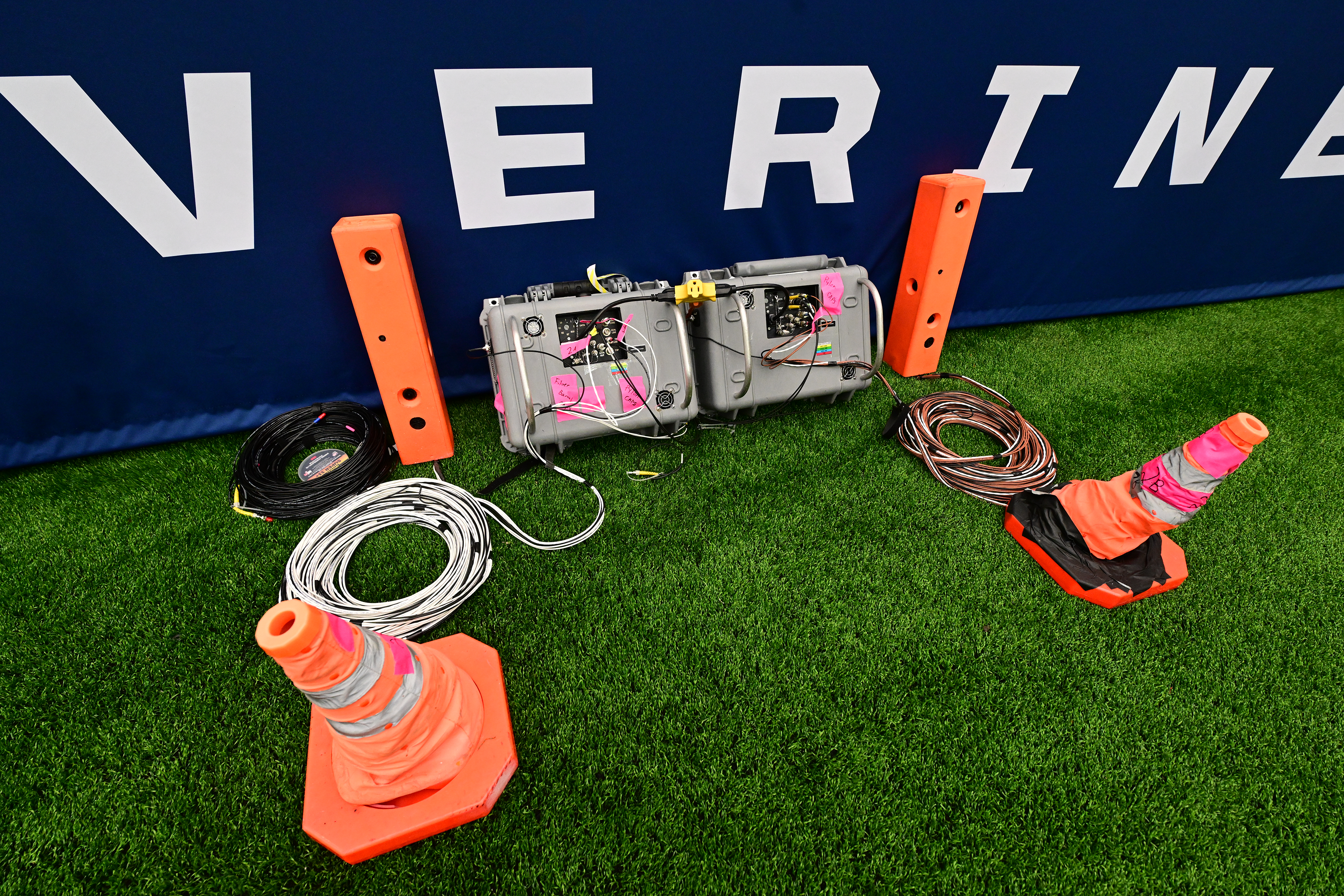
ESPN is partnering with BSI on a new edition of its popular PylonCams, adding high frame rate and super slow motion to the embedded camera’s capabilities. (Photo: Joshua R. Gateley/ESPN Images)
According to NEP (which owns BSI), the cameras are new super-slow-motion “Nucleus” cameras. LaChance notes an image quality that he has never seen from the pylon before.
“PylonCam has become a staple, and we’re proud of that,” he says. “This takes that concept into the next generation. All networks have been able to give great looks [from that camera], and now, with this technology, we hope we can give crisp, clean, definite looks in stunning detail.
“Hopefully,” he continues, “we catch lightning in a bottle and get a great sequence of plays. I think it’s great for the audience at home: the detail that they now can see things in with this innovation. It’s going to be terrific. It’s not the next step; it’s the next leap.”
The back corners of the end zones will be covered by the standard PylonCams, featuring Dreamchip Atom One cameras, that ESPN has been rolling out this college football season. Each backline will also have an additional two pylons, one on each side of the goalposts. Line-to-gain PylonCams from C360 will follow along the sidelines as the action progresses up and down the field.
Speaking of goalposts, ESPN is also bringing to the CFP Championship Game for the first time a 360-degree box camera designed by Cosm, which will offer a 190-degree look at the back of the end zone from its position along the bottom of the goalposts.
In total, ESPN is deploying 89 game cameras: 78 dedicated to the main game broadcast and 11 shared with other MegaCast options, such as Field Pass With the Pat McAfee Show alternative broadcast hosted from the sidelines.
Also in the lineup are 15 super-slow-motion cameras, 13 RF cameras, a pair of SkyCams, RefCams (affixed to referees’ caps), the Goodyear Blimp and a live drone flying outside (weather permitting; thunderstorms are forecast for the Houston area on Monday), a wireless handheld (a Sony Fx3 on a Ronin gimbal) on the field shooting shallow depth of field, a pair of Sony 4800 SSMO robotic units (provided by Fletcher) shooting down the goal lines.
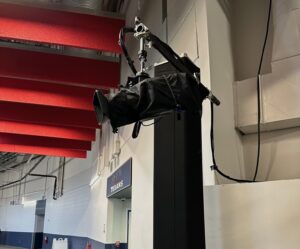
Robotic cameras will also capture angles from various areas of the stadium, including the hall way leading from the locker rooms to the field.
It’s a wealth of options for producer Bill Bonnell and director Jimmy Platt, working together on this event for the first time. VP, Production, Amanda Gifford is capping her first full season overseeing ESPN’s college-football event production.
A notable change this year is that both SkyCams will carry 4K cameras. Even though the overall main game production will be produced and distributed in 1080p SDR, the lower of the two Skycams is outfitted with a Sony P43 shooting in 4K for the 4K Skycast alternative feed available to selected distributors.
According to ESPN Senior Operations Manager Tommy Mitchell, the crew has also swapped in another P43 on the high SkyCam, which typically gets a standard P1 or P50. That SkyCam will still serve its traditional role as the high SkyCam but will now have the added capability of 4K zoom extraction. The camera’s feed will remain an angle at the front bench’s disposal but will also feed into a Sony workstation where an operator can zoom, pan, and scan an image for a definitive look on a controversial play.
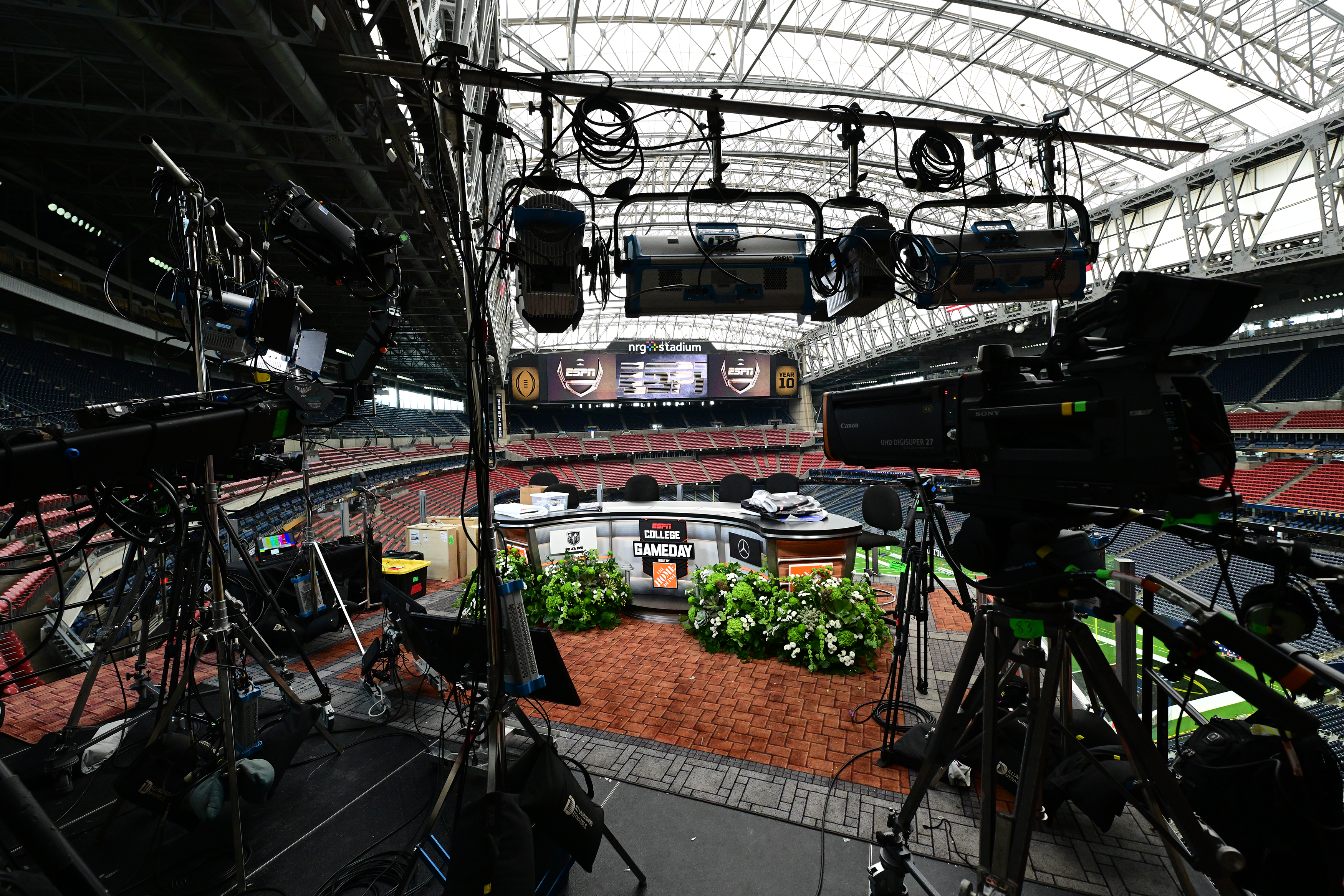
ESPN’s College GameDay is onsite with a studio desk inside NRG Stadium. (Photo: Joshua R. Gateley/ESPN Images)
ESPN also has 168 channels of replay to provide playback on all these feeds.
“Your story can develop anywhere on the field or in the back hallways to the locker rooms,” says LaChance. “Do you have something that gets you there to cover a story as it breaks? Is it already there, or do you have the means to move something over there and pivot and quickly get to something? That’s the effectiveness we’re proud of. I think we’re in a good spot, but we’re never complacent. We’re always asking, ‘What can we do to take the whole thing to the next level for the fans at home?’”

Leading an ESPN production meeting on Sunday: (clockwise from top left) ESPN VP, Production, Amanda Gifford; Producer, College GameDay, Jimmy Gaiero; Managing Producer, College GameDay Lindsey Lloyd; and Coordinating Producer Matthew Garrett. (Photo: Allen Kee/ESPN Images)
CFP Goes IP
On the operations side, this CFP National Championship is a big one for ESPN: for the first time at this event, the production compound is nearly completely IP.
There’s a total of nine mobile production and support units in the approximately 60,000-sq.-ft. compound (significantly smaller than last year’s 170,000-sq.-ft. dual compound at SoFi Stadium in Los Angeles), and all but one of them — Game Creek Video’s Justice (anchoring the Field Pass alternative broadcast) — is operating on SMPTE ST 2110.
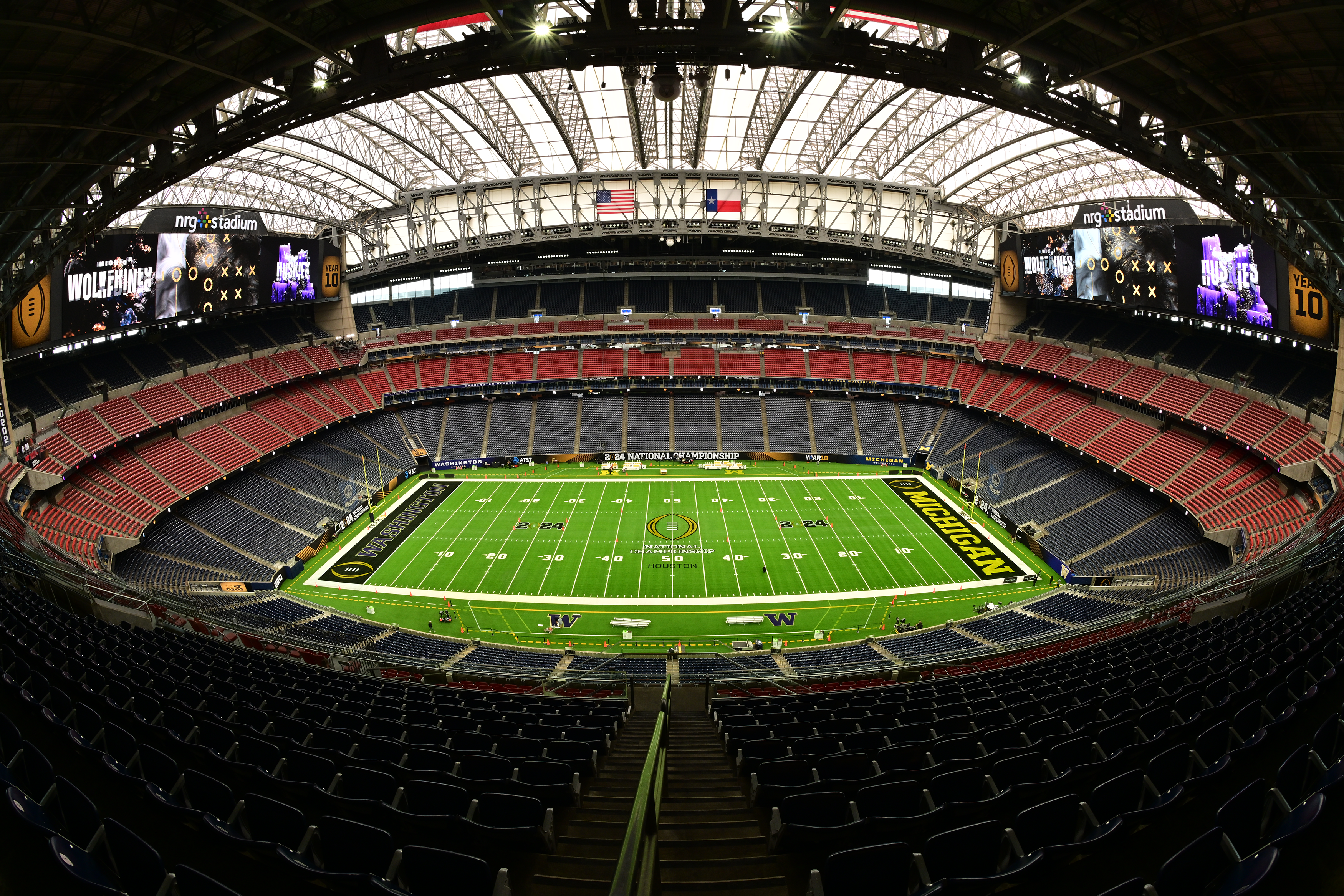
Houston’s NRG Stadium hosts the 10th championship game in the College Football Playoff era, the final one under the current four-team format. (Photo: Phil Ellsworth/ESPN Images)
“It gives us a lot of advantages,” says Brian Ristine, remote operations specialist, ESPN. “We’ve tripled the amount of infrastructure shared between all the trucks in years past because [SMPTE] 2110 allows us to do that. It becomes a lot more efficient to do that. There’s not a lot of infrastructure we need to build up with I/O kits and different interfaces between the trucks. The trucks literally connect themselves to each other and come up from that. Technology-wise, it’s much simpler and gives us a lot more capacity to do the things we need to do.”
It’s also quite the feat, given that NRG Stadium is not one of the most up-to-date stadiums in terms of broadcast infrastructure. There’s no SMPTE or fiber in the building. To achieve full IP, ESPN installed 100% of the cabling it’s using to broadcast the game and related studio shows — including College GameDay — from the stadium. That equates to more than 18 miles of cable and approximately 1,000 strands of fiber.
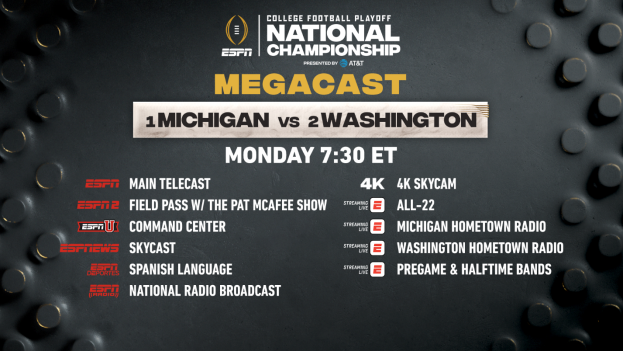
This year’s MegaCast offers 11 viewing options across ESPN’s family of cable networks and the ESPN App. (Image courtesy ESPN)
Although there’s less studio presence than in years past, absent both the SEC Network and the ACC Network, there’s still plenty going on for ESPN. Plus, with so many viewing options for the MegaCast to serve, it was worth the ESPN operations team’s effort to get the whole compound together on IP.
“You hear us refer to it as the show, but really we’re doing 17 shows,” cracks Mitchell. “There’s the game. There’s College GameDay. There’s The Pat McAfee Show. There’s all these different things. We’ve got one thing that’s good for one show but maybe doesn’t work for everybody. We’re tasked with being that traffic cop. How does this affect everyone, and how do we make it all work together?”
The College Football Playoff National Championship Presented by AT&T between No. 1 Michigan vs. No. 2 Washington kicks off on Monday, Jan. 8 at 7:30 p.m. ET on ESPN.
